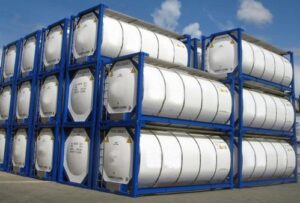The International Tank Container Organisation (ITCO) has published its 10th Annual Tank Container Fleet Survey. This year’s Survey estimates that, at 1 January 2022, the global tank container fleet had reached 736,935 units worldwide, compared to the figure of 686,650 on 1 January 2021, a year-on-year growth of 7.3%.

Reflecting a strong upsurge in demand for new equipment, especially towards the end of 2021, a total of 53,285 new tank containers were built, compared to 35,800 tank containers the previous year – an increase of some 17,485 units.
The complete Survey can be downloaded from the ITCO website http://www.itco.org.
The Survey shows how, numerically, the industry continues to be dominated on a global level by a relatively small number of major tank container operators and leasing companies. The top 10 tank container operators account for over 266,665 tanks, representing some 60% of the global tank container operators’ fleet. The top 10 leasing companies account for 275,050 tanks, representing about 85% of the total leasing fleet.
Commenting on the results of the Survey, Reg Lee, ITCO President, notes: “Increased volumes from a wide range of cargoes from Asia – as well as space-shortages on containerships, port congestion and inland transport delays – these are all factors which have contributed to increased tank container demand in 2021. These issues, and especially the containership capacity shortage from Asia to the main markets of North America and Europe, have led to significantly increased freight rates. Despite these rate increases, demand for tanks has nevertheless continued to grow. One factor is that the high freight rates lead to an economic need to maximise the quantity of cargo shipped within an ISO container slot, with the tank container transporting about 60% more cargo compared with a container filled with drums.”
Read Also: Shipping Position Market Square As At Monday 7, March 2022
Looking ahead to the coming 12 months, he notes: “The signs for 2022 are that there will be strong demand on all global trade lanes, but the challenge for tank operators to book space on containerships could continue to cause industry problems, as some shipping lines prioritise “carrier owned containers” rather than “shipper-owned containers. There are no signs of improvement in the near term from the problems of space shortage on containerships. Customer demand remains strong, but much of the new vessel capacity will not be introduced into service for at least another year.”
Commenting on the service side of the industry, Reg Lee states: “Alongside the shortage of space on-board containerships, the tank industry also faces a shortage of tank container cleaning and repair capacity, with investment and expansion of tank depots generally not keeping in line with global tank fleet expansion. Driver recruitment for tank container hauliers continues to be a problem for the industry.”
Kindly like us on Facebook















